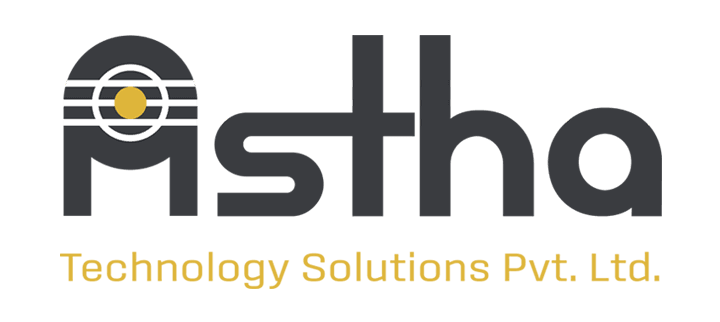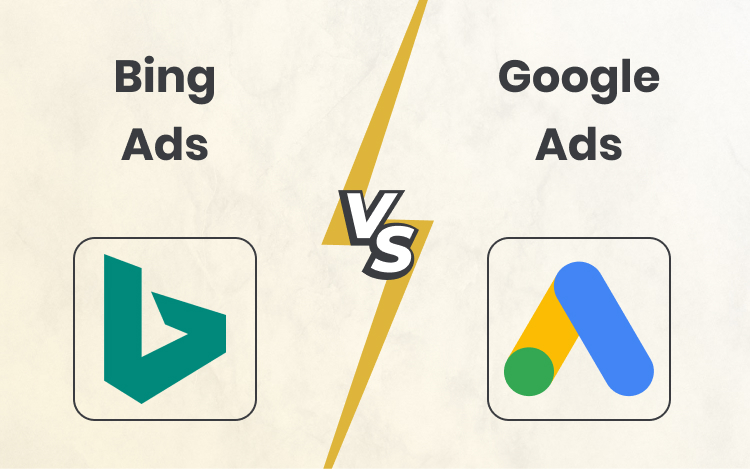In 2025, digital advertising is more competitive, data-driven, and diverse than ever. While Google Ads (formerly Google AdWords) continues to dominate the online ad space, Microsoft Advertising (formerly Bing Ads) is quietly gaining ground. For ROI-focused businesses and digital marketing agencies like Astha Technology, understanding the strengths of both advertising platforms is crucial.
Choosing between Bing Ads vs Google Ads isn’t just about traffic volume. It’s about smart targeting, strategic planning, and maximizing your ad spend. This in-depth comparison explores key differences, cost insights, ad formats, and audience reach, helping you make smarter ad investments in 2025.
The 2025 Ad Landscape: Why This Comparison Matters
Recently, advertisers have started looking beyond Google. High costs, increased competition, and changing user behaviors have forced marketers to diversify. Microsoft Advertising has responded with innovation, expanding its reach and tools for advertisers.
Many businesses now use Bing Ads alongside Google Ads to improve ROI and reach new audiences. In this environment, platform comparison isn’t optional—it’s essential.
What Are Google Ads and Bing Ads?
Google Ads is Google’s ad platform that lets you show your ads on Google Search, YouTube, Gmail, and across millions of sites in its Display Network. With over 90% of global market share, it offers unmatched reach and sophisticated targeting.
Bing Ads, now known as Microsoft Advertising, serves ads across Bing, Yahoo, AOL, and the Microsoft Audience Network. Although its search market share is smaller, it covers nearly 30% of desktop searches in the U.S., with stronger performance in the UK and Canada.
While both platforms serve search engine advertising, they operate in different ecosystems. Google integrates with Android, YouTube, and Chrome. Microsoft taps into Windows, Office, LinkedIn, and Edge. Each offers specific benefits, depending on your objectives.
Key Differences Between Bing Ads vs Google Ads
While both Google Ads and Microsoft Advertising offer similar ad formats, their differences go beyond surface features.
Reach and Market Share
Google Ads controls over 90% of global search traffic. It offers massive reach, putting your ads in front of billions of people across Google’s ecosystem.
Microsoft Advertising, which powers Bing, Yahoo, and AOL, owns around 30% of desktop search in the U.S. Though smaller, it still brings millions of users. It performs especially well in the U.S., UK, and Canada, where many desktop users remain active.
Audience Demographics
Google users tend to be younger as well as more mobile-oriented. They use Android, Google Search, and YouTube daily. This makes Google ideal for brands that target mobile shoppers or Gen Z consumers.
Bing users tend to be older (35+), more educated, and influential. Most use desktop browsers like Edge or Internet Explorer at work. That audience is ideal for B2B, finance, real estate, and education.
Targeting Options
Google offers smart tools like in-market audiences, custom segments, and automated bidding. Thanks to Google’s advanced AI, your ads can target users who are more likely to take action, like clicking, signing up, or buying.
Bing has fewer tools but one major strength: LinkedIn profile targeting. You can target visitors by company, industry, or job title, which Google does not offer. This makes Bing ideal for B2B marketing.
Both platforms offer geotargeting, device filters, and ad scheduling. But Microsoft lets you control bids by device, browser, and even operating system. That gives advertisers more control over where and how ads appear.
Cost Per Click (CPC)
Google Ads is often more expensive. High competition drives up CPC in key industries like insurance, law, and tech.
Microsoft Advertising typically costs less. Many Bing keywords are 30-50% cheaper. That means advertisers can get more clicks for the same budget.
Click-Through Rate (CTR)
Google usually wins on CTR due to higher search volume and better brand familiarity. But Bing often places ads higher on the page due to less competition. That can raise CTR, especially in niche markets.
In several industries, Bing matches or outperforms Google Ads’ click-through rate. We’ve seen this in campaigns for accounting firms and financial advisors where searchers often use a desktop.
Conversion Rates
Conversions depend on your audience and device. Google converts well on mobile, thanks to fast-loading ads and app integrations. It’s great for e-commerce and impulse purchases.
Bing excels on desktop. Its users often research longer and are more committed when they click. In B2B, legal, and education, Bing sometimes delivers higher lead quality than Google.
Voice Search and Smart Devices
Google leads in mobile voice search, particularly on Android phones that use Google Assistant. That’s key for local businesses or services triggered by quick voice queries.
Bing powers voice search for Cortana and Amazon Alexa. While less common on phones, smart speaker use is growing in homes. If your product aligns with home or lifestyle needs, voice campaigns on Bing may work well.
Display Networks and Contextual Reach
Google’s Display Network consists of millions of websites, mobile apps, and YouTube. It gives advertisers huge reach with visual ads and videos. Performance Max campaigns take that even further.
Microsoft Ads has a smaller reach, but it’s highly targeted. It’s Microsoft Audience Network places ads on MSN, Outlook, Microsoft Edge, and LinkedIn. It’s ideal for professional and content-heavy environments.
Unique Features
Google’s strengths include YouTube Ads, Smart Campaigns, and Performance Max. It also dominates in mobile and local search.
Bing shines with LinkedIn integration, deeper device targeting, and lower ad competition. Its import feature lets you copy Google Ads campaigns directly into Bing Ads with ease, saving setup time.
Cost & ROI: Which Platform Delivers More Value?
Cost-effectiveness is where Bing Ads and Google Ads frequently differ. While Google has the larger audience, it also comes with higher advertising expenses.
In most industries, Bing’s CPC is substantially lower. For example, in the legal, healthcare, and finance industries, clicks on Microsoft Advertising can cost 30-50% less. You may get less traffic, but often at a lower cost and with better quality clicks for certain audiences.
ROI doesn’t depend on clicks alone. It’s about conversions and cost per lead. Microsoft’s desktop-heavy audience often converts well, especially for B2B and local services. For e-commerce or mobile apps, Google Ads may be the better fit due to its scale and app integration.
Audience Targeting Capabilities
Both platforms offer location, device, and time-based targeting, but they differ in approach.
Google Ads has advanced audience segments based on browsing behavior, shopping intent, and custom audiences. It also supports remarketing and detailed affinity targeting.
Microsoft Advertising gives unique options such as LinkedIn profile targeting, which allows you to reach people based on their job title, industry, or organization. This makes it highly effective for professional services and B2B brands.
Both platforms support ad scheduling, geofencing, and demographic filters. However, Microsoft provides slightly more control over device segmentation, which helps tailor ads for desktop versus mobile behavior.
Ad formats and feature comparisons
Ad formats play a giant role in performance. Both platforms support:
- Search ads
- Shopping ads
- Display network ads
- Dynamic search ads
- Call and location extensions
Google Ads goes further with YouTube video ads, Performance Max campaigns, and a robust ecosystem of AI-powered bidding options. It’s ideal for brands looking to scale fast with an omnichannel presence.
Microsoft Advertising lacks native video functionality, but compensates via the Microsoft Audience Network, which displays adverts on Outlook, MSN, and Edge. This is particularly beneficial for businesses that target professionals during their work hours. Bing also offers import tools, allowing you to migrate your Google Ads campaigns with just a few clicks.
Which Platform Is Best for Your Business Type?
Different businesses thrive on different platforms.
E-Commerce Brands
Google Ads wins over Shopping Ads, YouTube, and Display Network. For high-volume traffic and product visibility, it’s unmatched. However, Bing Ads can support this strategy by capturing value-seeking desktop shoppers.
Local Businesses
Google’s mobile-first features and map listings help local businesses connect with customers instantly. Bing still offers local targeting and map extensions, but it’s stronger when your audience browses on a desktop.
B2B Companies
LinkedIn targeting gives Bing Ads an advantage. If your business depends on job titles, industries, or high-level decision-makers, Bing can deliver high-quality leads at a lower cost.
International or Domestic Campaigns
Google has a broader global coverage, with localized versions available in nearly every region. Microsoft Advertising is strongest in North America, the UK, and a few selected countries. On a global scale, Google leads. For domestic targeting, Bing may be more efficient.
Why Using Both Platforms Together Works Best
You don’t have to choose one. Using both is often the smartest move.
At Astha Technology, we often recommend a multi-platform PPC advertising strategy. It diversifies your traffic, protects against platform algorithm changes, and captures audiences Google might miss.
Many of our clients start with 70% of their ad budget on Google and 30% on Bing. We then analyze conversion rates, cost per click, and lead quality to adjust accordingly. For several B2B campaigns, Bing Ads outperformed Google in lead value despite lower traffic volume.
Using both platforms also allows A/B testing. You can run similar campaigns and compare how different audiences respond. This method provides more insights than relying on one ad network alone.
Conclusion: Google vs. Bing?
The Google Ads vs. Bing Ads debate isn’t about picking a winner. It’s about choosing the best tool for the job or using both when needed.
Google Ads is powerful, scalable, and offers unmatched reach. Microsoft Advertising is cost-effective, professional-focused, and perfect for desktop and B2B targeting. Smart advertisers understand the benefits of each and integrate both into their paid search advertising strategy.
- Google Ads delivers broad reach, strong performance on mobile, and access to platforms like YouTube and the Google Display Network. It’s ideal for e-commerce, mobile-driven campaigns, and brands that want to scale quickly.
- Bing Ads (Microsoft Advertising) provides lower average costs per click, access to a professional desktop audience, and unique features like LinkedIn profile targeting. It’s especially effective for B2B, finance, education, and industries where desktop usage remains strong.
In 2025, successful digital advertising is about understanding where your audience spends their time and which platform delivers the most value for your goals. Testing and analyzing both Google and Bing Ads can help you make data-driven decisions and improve your overall return on investment.

